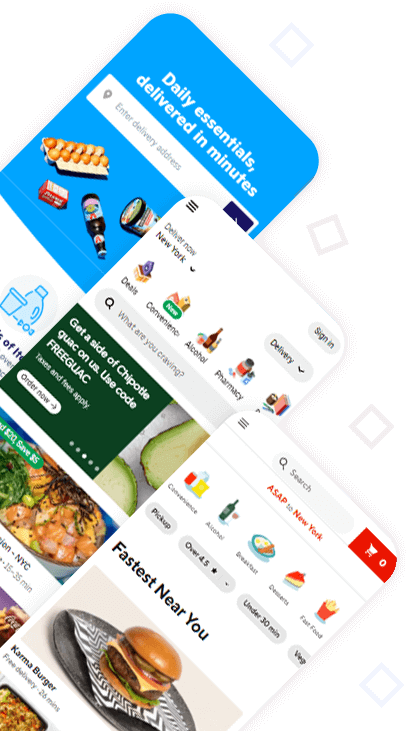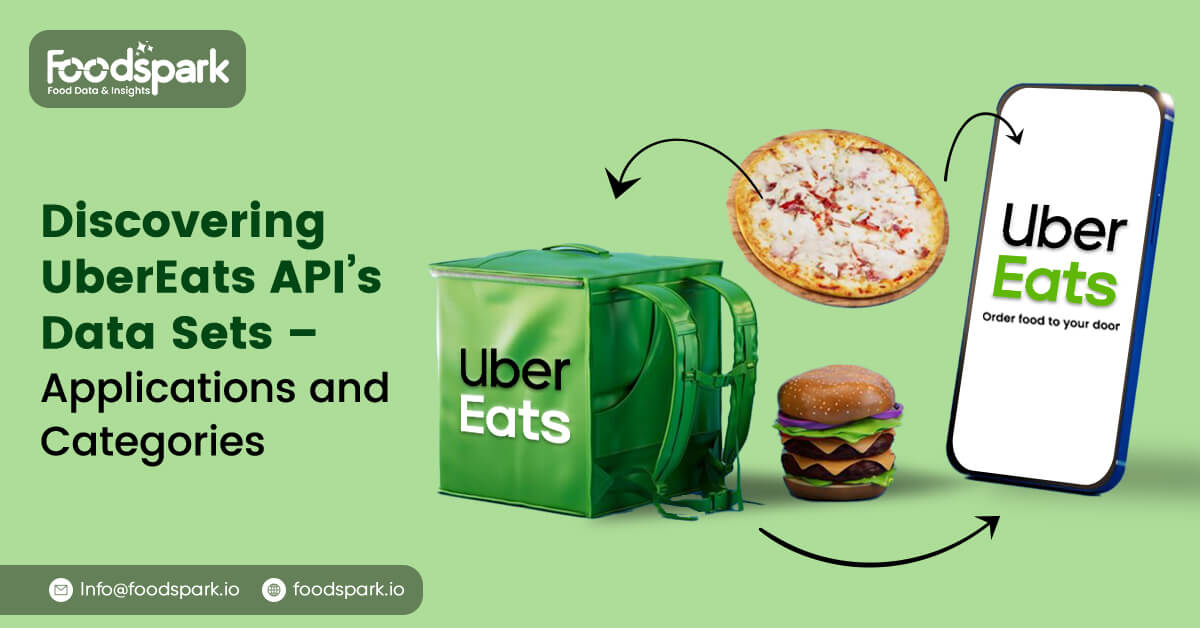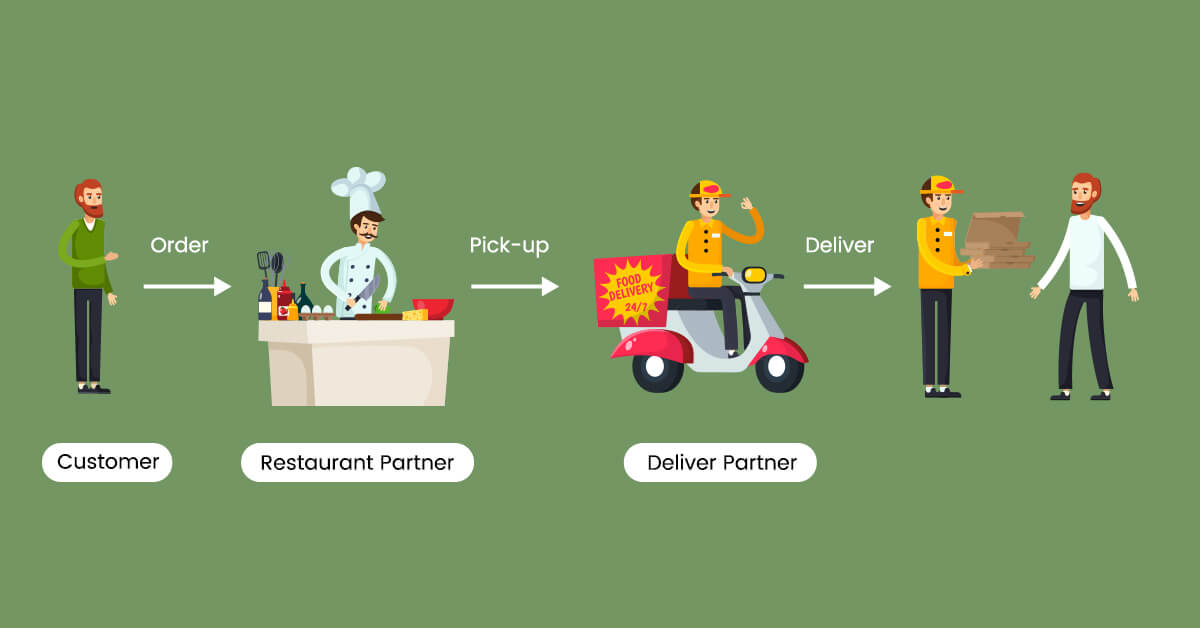Let's talk!
We'de love to hear what you are working on. Drop us a note here and we'll get back to you within 24 hours.

We'de love to hear what you are working on. Drop us a note here and we'll get back to you within 24 hours.

With the rise in digital technology, we have the world at our fingertips. One of these technological boons is getting delicious food delivered to your house. But have you ever wondered how we can order our favorite meals and have them at our homes? Well, one of the companies making this possible is UberEats! In this blog, we will explore the world of UberEats API. We will learn about data, scraping, extracting, and how they work together to bring us food!

You’re hungry and craving pizza but don’t want to leave the house. That’s when UberEats comes to your aid! With the UberEats app, you can browse various restaurants, choose your favorite dishes, and place an order. It’s like having a food genie at our fingertips! But have you ever wondered how the UberEats app knows which restaurants are available and what they have on their menus? Well, that’s where the UberEats API comes to play!
API stands for Application Programming Interface. It lets different apps and websites to communicate to each other and share information. The UberEats API allows developers access their data. It’s like a secret code that assists different systems work together and make lives easier.
Now, let’s dive into the exciting world of data, scraping, and extracting. Data is information, like names of restaurants, their locations, the dishes they offer, and even customer reviews. But where does this data come from? When we say “scraping,” it means gathering data from different sources, like websites or apps. It collects the information that we need. In the case of UberEats, the API scrapes data from their system, including details about restaurants, menus, and much more. Once you scrape data, you need to extract and organize it efficiently so the developers can easily understand and leverage it.
Extracting data means sorting it out, ensuring it’s in the correct format, and separating it into categories.
This way, developers can work with the data and display it in their apps or websites.
Now that we understand the basics of data, scraping, and extracting, let’s see how it all comes together with UberEats API. A developer can use the UberEats API to create an app or a website that offers food delivery or restaurant information. In case a developer wants to build a restaurant discovery app. They can use the UberEats API to scrape and extract data on different restaurants in a specific area. The developer can then organize this information in their app. It gets easy for people to find and order from the perfect restaurant.
Restaurant Information:
With the UberEats API, developers gain access to a treasure trove of details about the restaurants available on our platform. This data sets equips developers with information such as names, address, contact, and operating hours.
Menu and Food Items:
Developers can explore menus and uncover details about each culinary creation. It includes descriptions, prices, and special dietary considerations.
Ratings and Reviews:
Ratings and reviews empower users to make informed decisions when selecting a restaurant. It’s like having a team of food critics right at your fingertips!
Food Delivery Apps:
Developers can leverage the UberEats API to create their food delivery apps. Users can place orders, combining tasty options with UberEats’ swift delivery service.
Restaurant Discovery Platforms:
Developers integrate the UberEats API to build platforms. These enable users to discover nearby restaurants, explore menus, and read reviews. It empowers users to make informed decisions and enjoy exceptional dining experiences.
Aggregator Platforms:
The platforms merge various food delivery services, including UberEats, into one app. It allows users to order from many restaurants within one application.
Third-Party Integrations:
Such integration allows different industries to offer food delivery as an extra service, enhancing convenience.
Customized Solutions for Restaurants:
Developers can use the UberEats API to develop tailored solutions for restaurants.
Food Delivery Apps:
Developers can make their very own food delivery apps using the UberEats API. It helps them show you all the restaurants and yummy food you can order, and it comes super-fast, like magic!
Restaurant Discovery Platforms:
With the UberEats API, developers can make platforms where you can find nearby restaurants, check out their menus, and see what other people think. This way, you can pick the best place to eat and have a fantastic time!
Aggregator Platforms:
Imagine having one app where you can order food from lots of different places. Developers can make that happen with the UberEats API. They bring together different food delivery services, like UberEats, so you can choose from many restaurants all in one app. It’s super convenient!
Third-Party Integrations:
The UberEats API can even be used in other cool places, like hotels, travel agencies, or event platforms. They can add food delivery as an extra service, making everything easier for you. You can enjoy yummy meals wherever you are!
Customized Solutions for Restaurants:
Developers can create special things for restaurants using the UberEats API. They can connect it with special software that helps restaurants manage their orders and menus. This makes everything run smoothly, and you get your food even faster!
UberEats API is an incredible modern-day boon where developers can leverage the power of data. They can scrape and extract information and work to get scrumptious food to us. The UberEats API allows different apps and websites to share information and make life easier. So, next time you use a food delivery app, remember that technology made it all possible!
January 21, 2025 B2B marketplaces use data collection to expand and maintain relevance in the food industry. Organizations can improve...
Read moreJanuary 2, 2025 Web scraping has now become an important strategy in the accelerating world of e-commerce, especially for businesses...
Read more